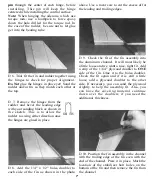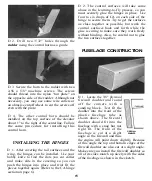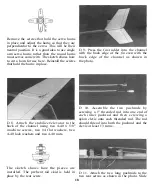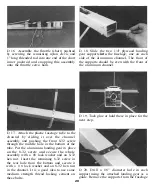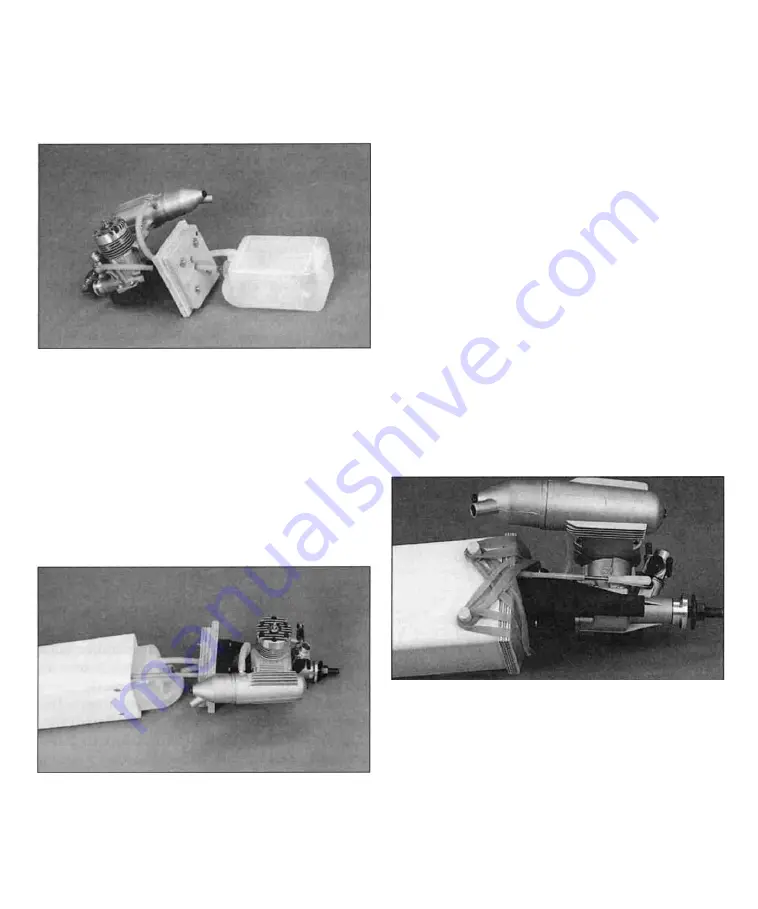
and enlarge the holes to 5/32". Insert a 4-40
blind nut in each hole and use a hammer to
seat the blind nut in place. Replace the
supports into the fuselage with the blind nut
facing up and use the 4-40 x 5/8" machine
screws to hold everything together.
D 21. Assemble your fuel tank according to
the manufacturer's instructions. Connect the
fuel tank to the engine by routing the fuel
tubing through the two holes in the middle of
the engine mount and attaching the pickup
line to the carburetor and the vent line to the
pressure tap on the muffler. Make the fuel
lines long enough so that there is a 1" gap
between the fuel tank and the back of the
firewall. Also make sure that the fuel lines
are not kinked.
D 22. Slide the whole engine assembly into
place in the front of the fuselage with the
throttle pushrod extending through the hole in
the firewall. Cut the outer pushrod so it starts
about 1/2" from the 1" threaded rod and
extends about 1/4" past the front of the
firewall. Remove the engine assembly from the
fuselage and glue the outer pushrod in place.
D 23. Reinstall the engine assembly into the
fuselage. Push two 1/4" x 3-1/2" dowels into
place in the four holes at the front of the
fuselage. The dowels should be a nice, tight
fit. If they are too tight you can enlarge the
holes slightly with your hobby knife. If they
are too loose you can use a drop of glue to
hold them in place. Do not use very much
glue on the front dowels since you will need
to remove the dowels to get the fuel tank out
of the fuselage. Secure the engine assembly
to the fuselage with four #62 or #64 rubber
bands as shown in the next photo.
Note: There are eight #2 x 3/8" sheet metal
screws provided if you would rather screw
the firewall in place instead of using the
rubber bands to hold it on. Tests have shown
that the rubber bands work extremely well
and help eliminate damage to the front end
during crashes.
D 24. Cut the inner pushrod to length and cut
and install the remaining 1" threaded link rod
to hook up the throttle control. Make sure you
can achieve both full throttle and idle without
binding of any kind. It is also nice if you can
shut the engine off at low throttle and full
down throttle trim. Bend the link rod if
necessary to make this possible. The entire
engine / fuel tank assembly can be removed at
any time by simply removing the rubber
21

